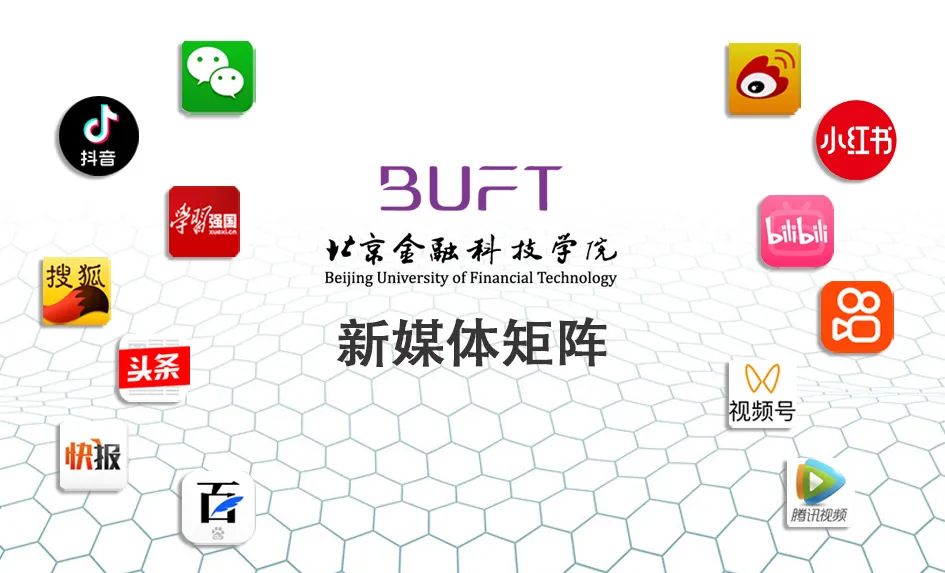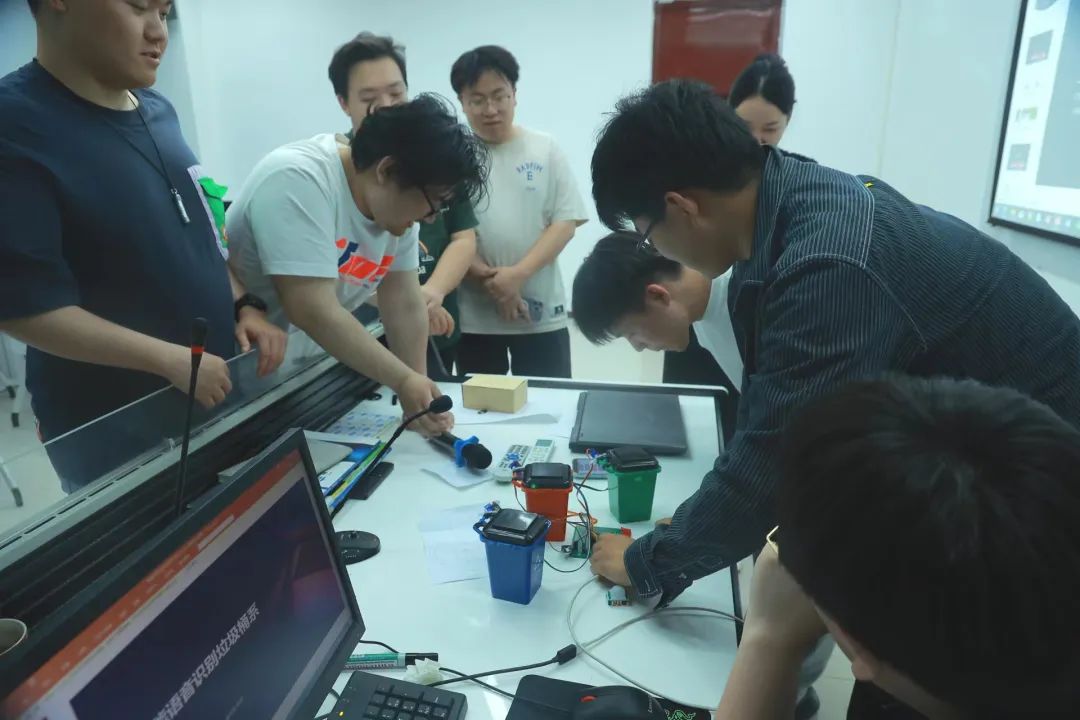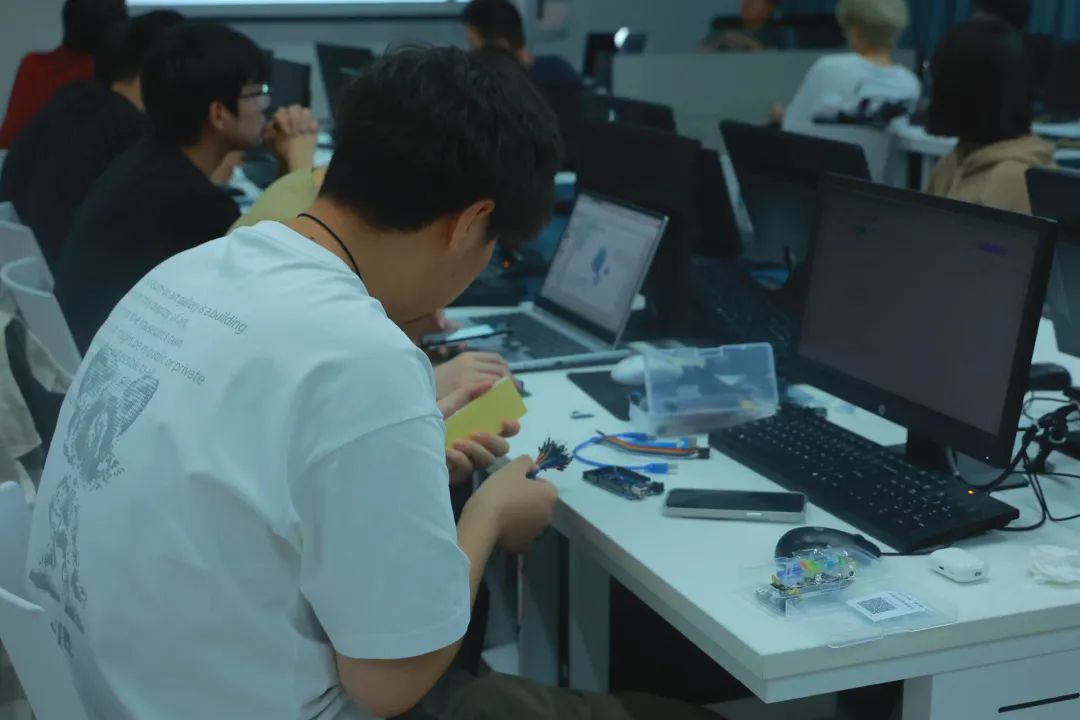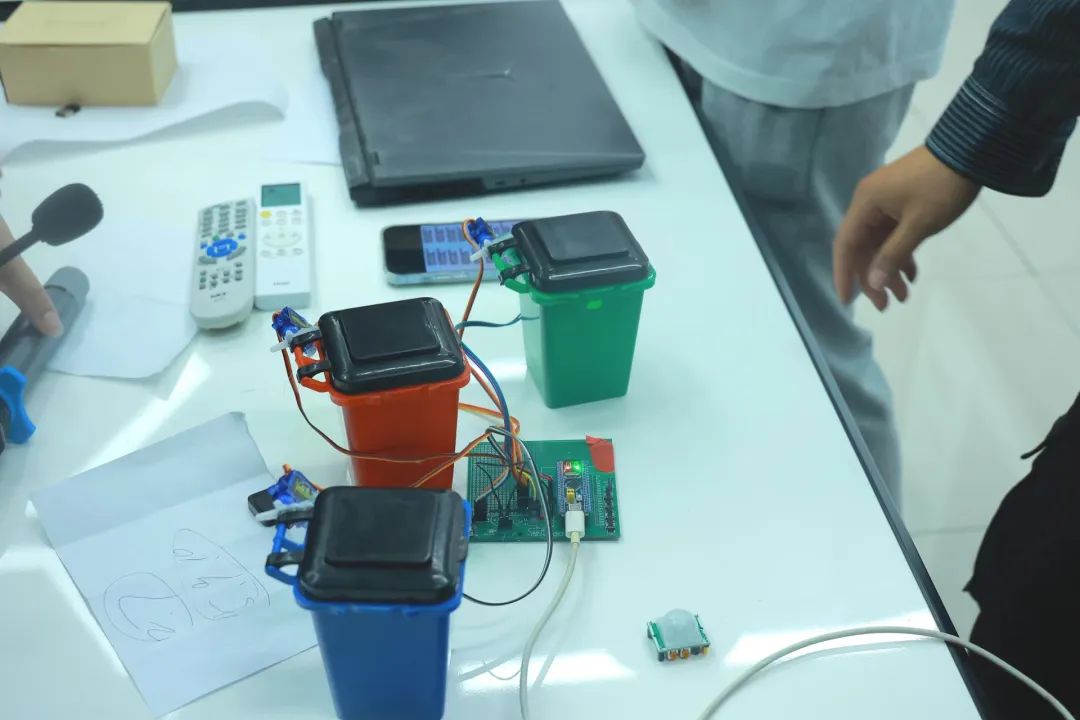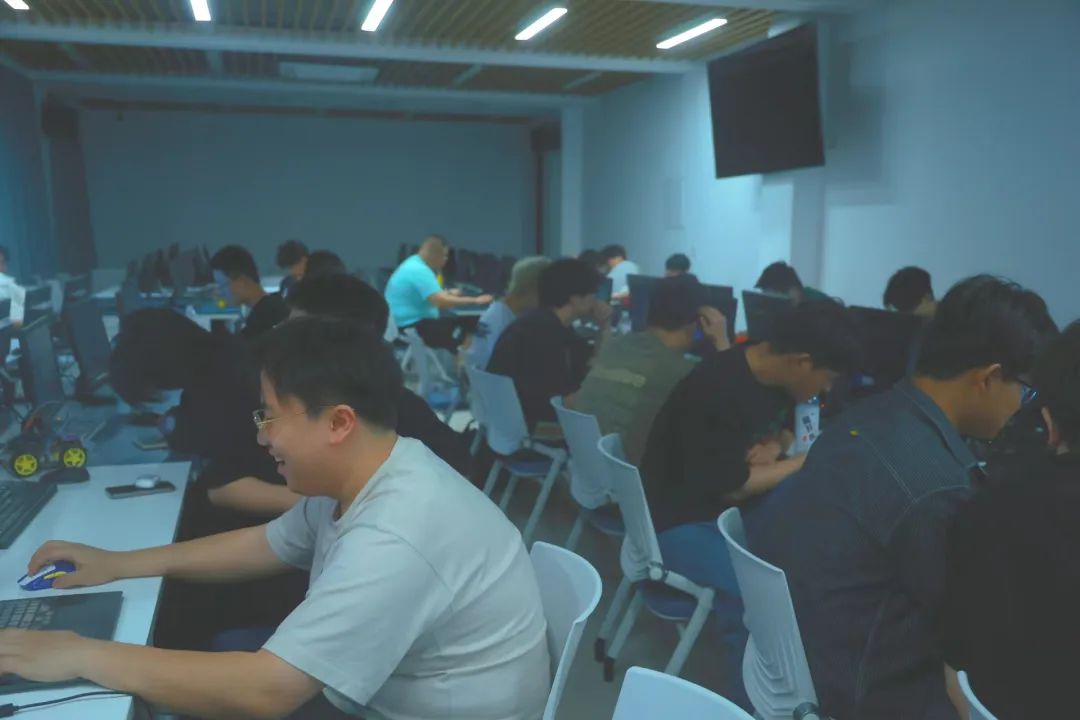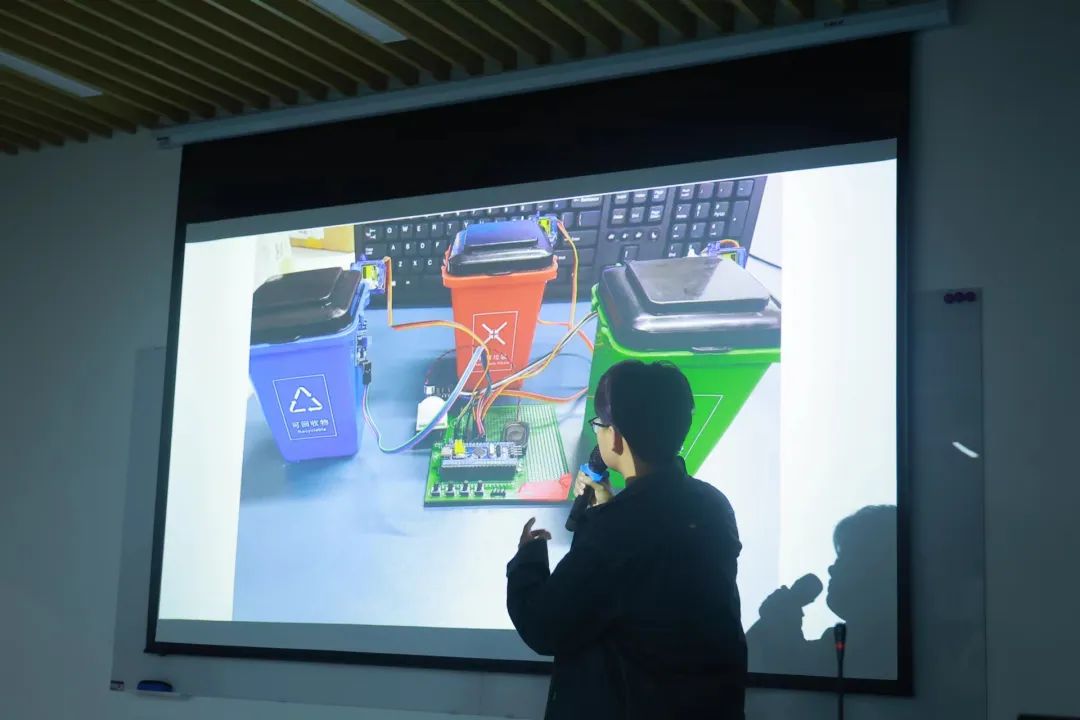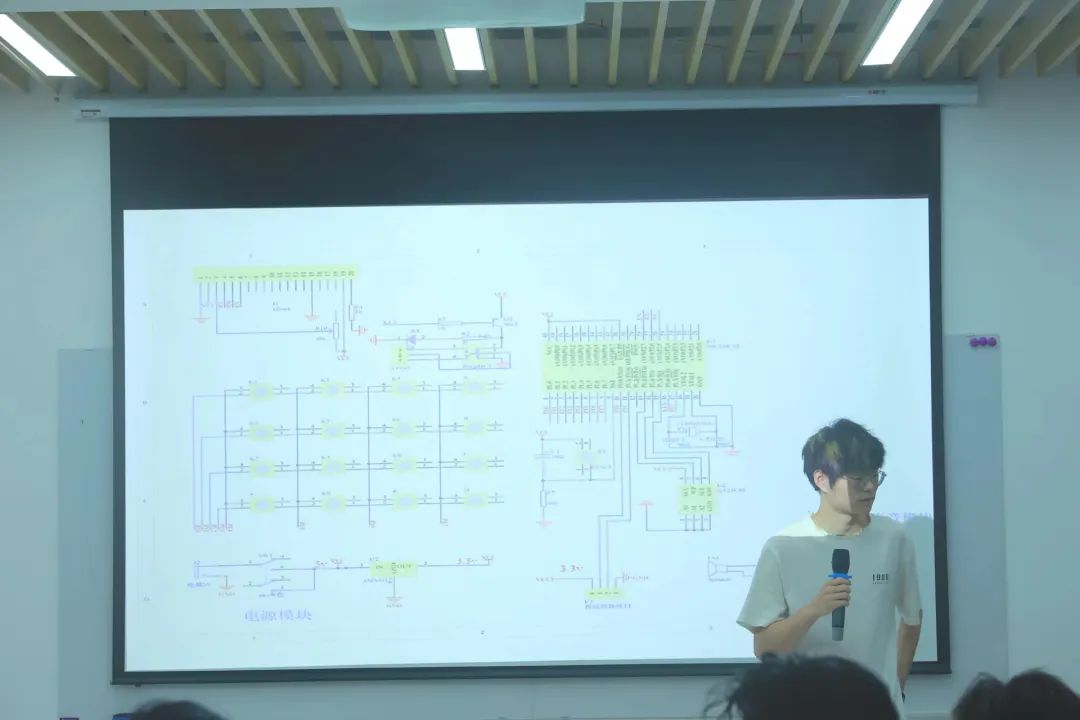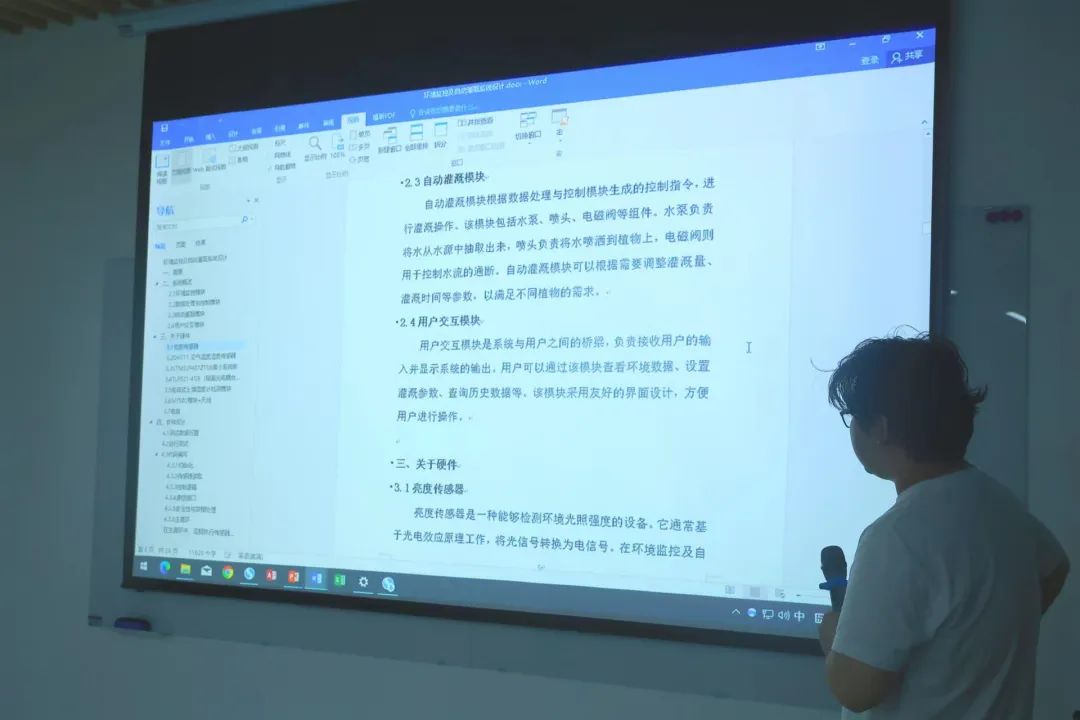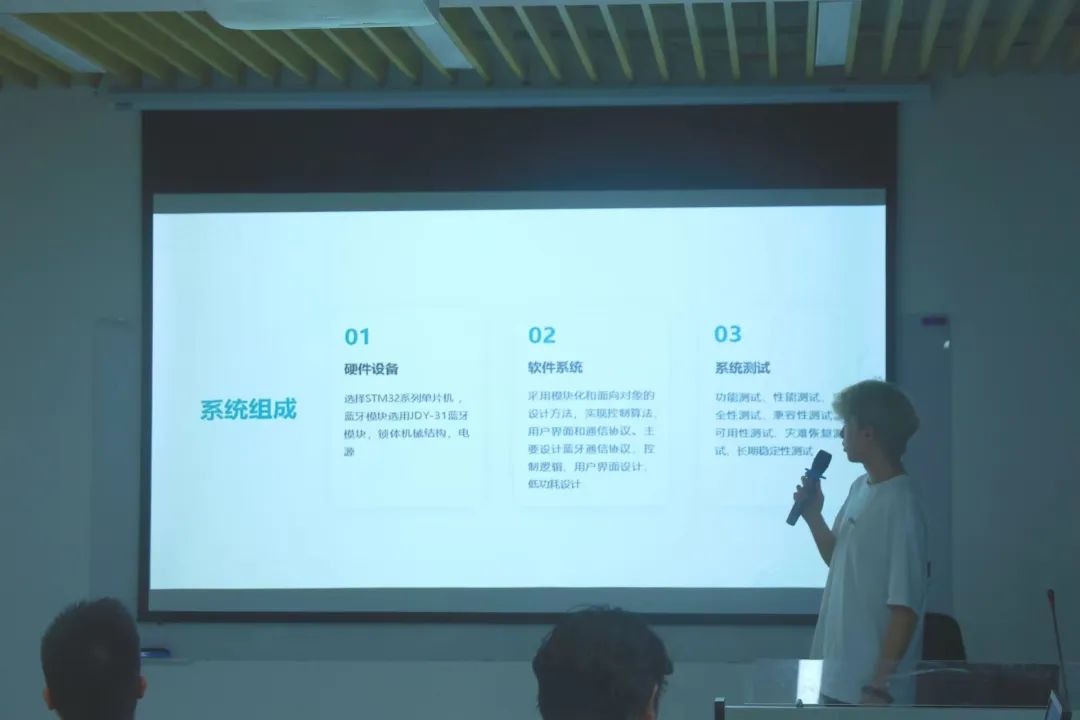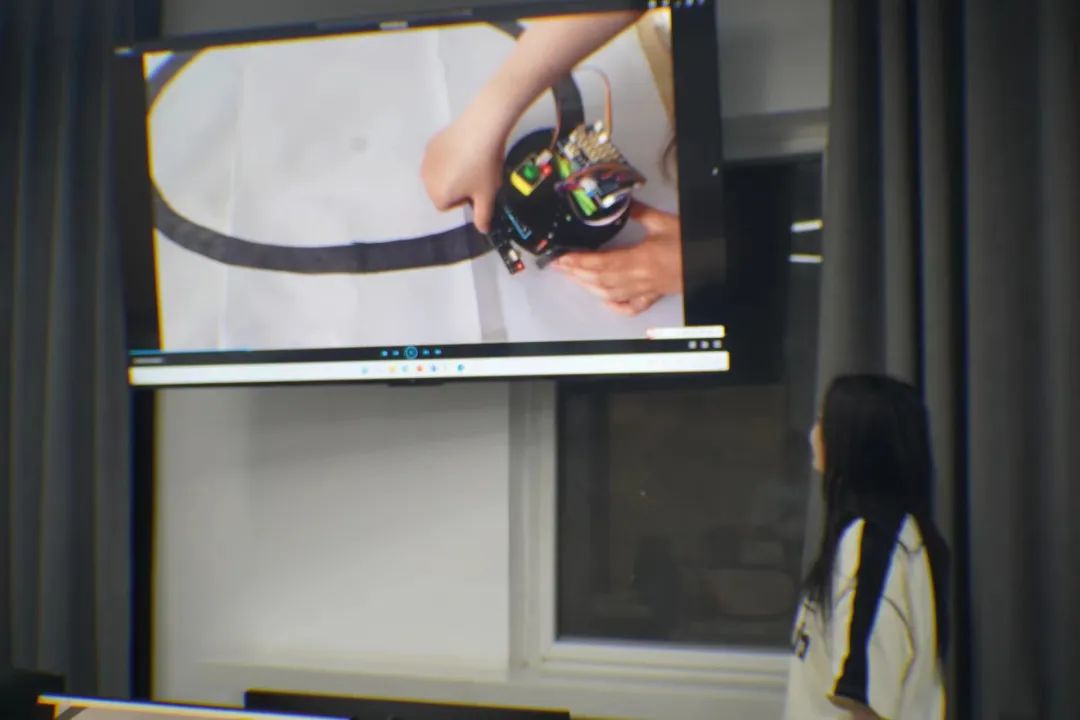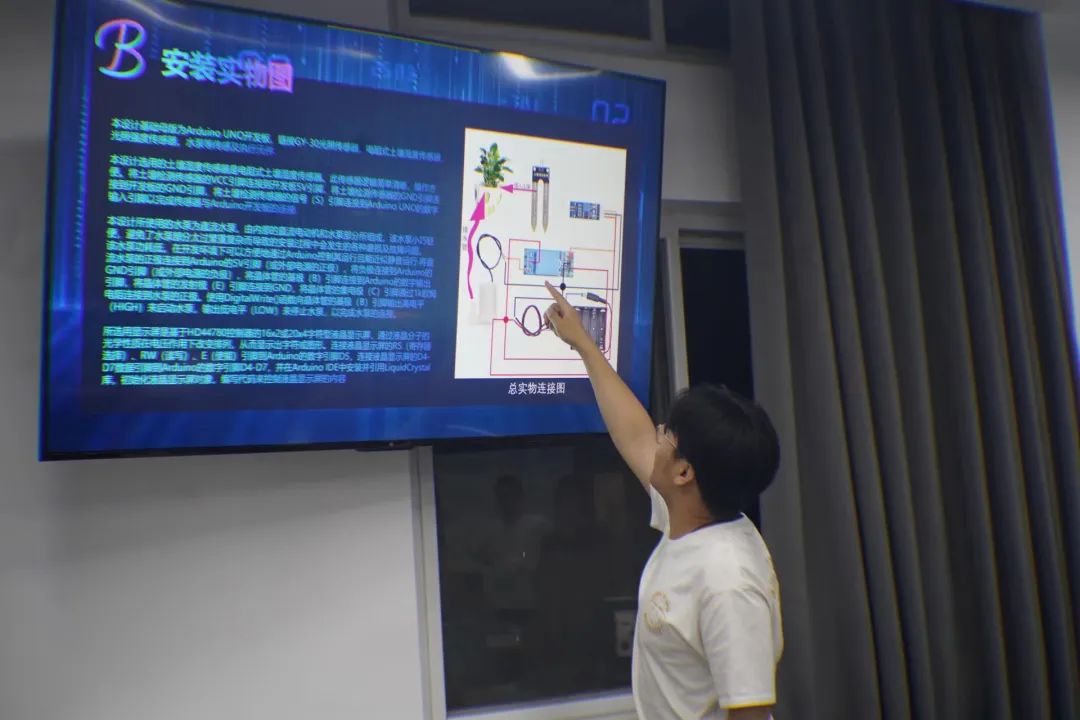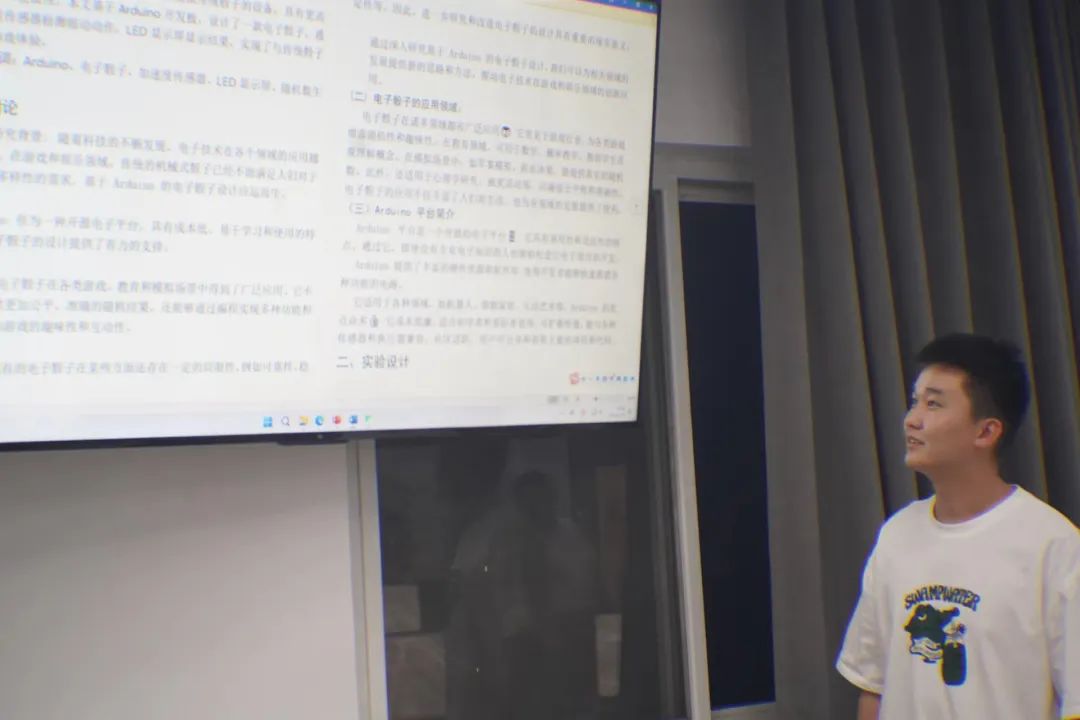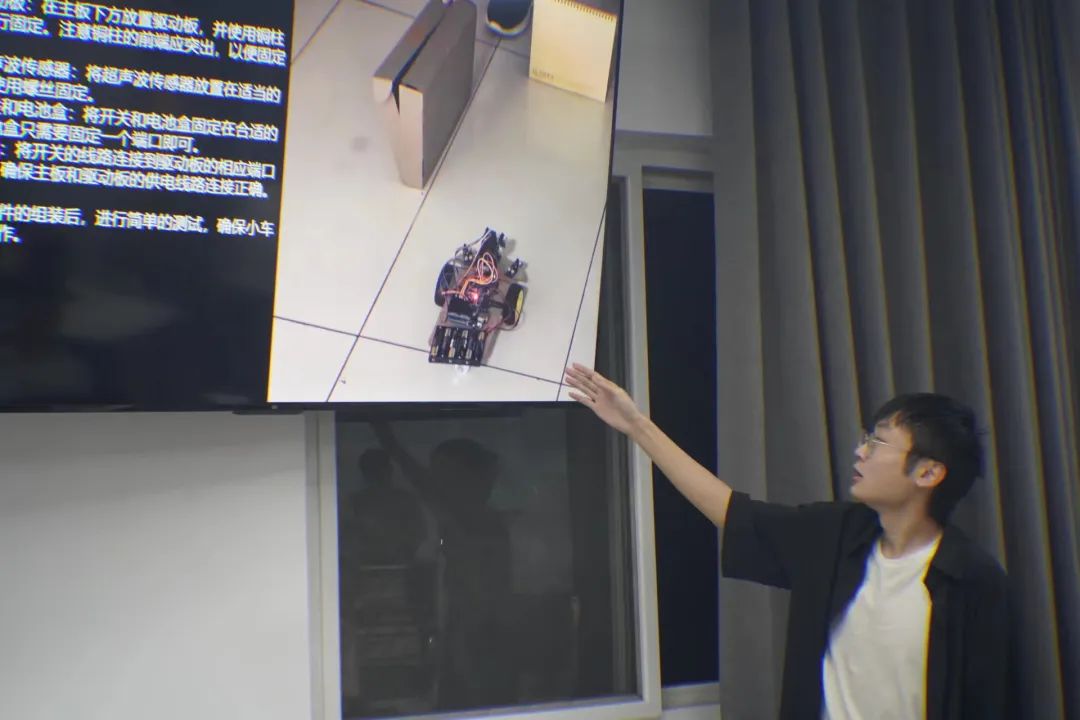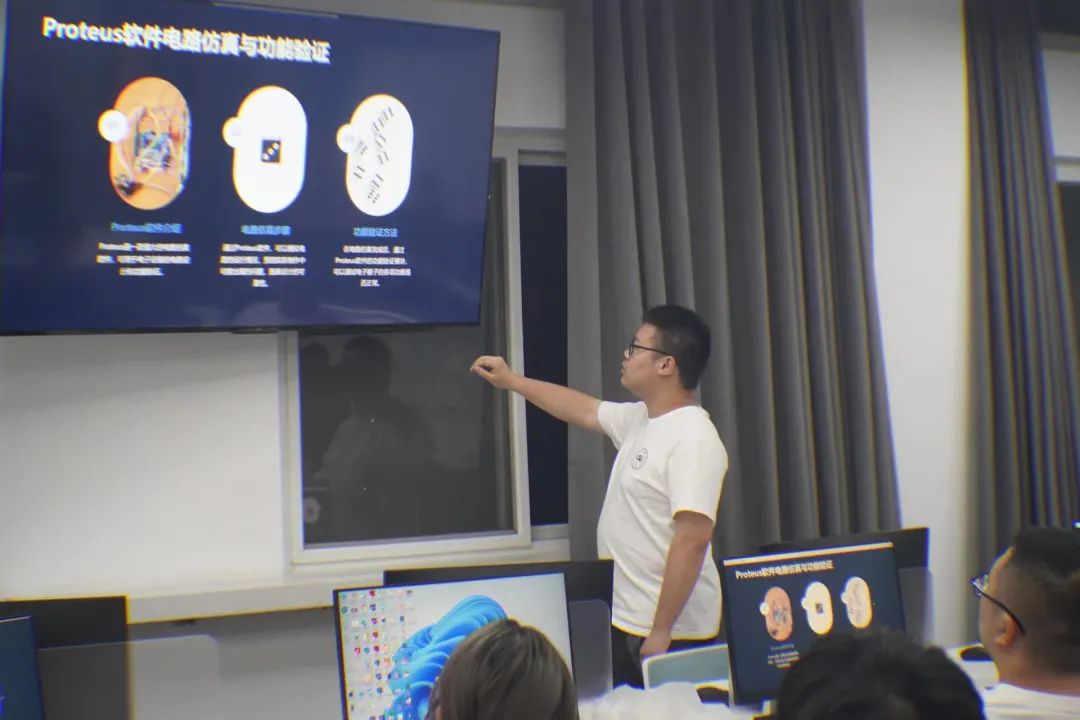The comprehensive practice course for Computer Science major—Arduino development board course is an important part of the comprehensive practice for Computer Science. This course aims to guide students to master cutting-edge embedded system development technologies. It combines theoretical knowledge with practical operations, focusing on cultivating students’ hands-on skills and innovative thinking. Through Arduino development boards, students can quickly build various interesting smart hardware projects and grasp the core technologies of embedded system development. Meanwhile, this course also involves fields such as the Internet of Things, sensor technology, and wireless communication, helping students broaden their knowledge and enhance their overall quality. The course emphasizes teamwork and project practice, requiring students to complete practical projects in groups, enhancing their teamwork and project management skills. This project-oriented teaching model helps to stimulate students’ interest in learning and creativity, cultivating more outstanding computer talents with innovative spirit and practical ability. Through this course, students will master the entire process from hardware selection, circuit construction to software programming, laying a solid foundation for future professional development. Additionally, this course will incorporate industry trends, encouraging students to apply what they have learned to solve practical problems and cultivate excellent engineers with practical abilities and innovative spirit.
At the beginning of the event, Teacher Cheng Xiaohui stated: “Arduino is an open-source hardware and software platform that is easy to use and powerful, providing unlimited possibilities for our innovative practice. Through Arduino, we can combine theoretical knowledge with practical operations, turning ideas into reality. This experimental activity is not only to help everyone master the basic programming and hardware design skills of Arduino but also to cultivate everyone’s innovative thinking and practical ability through this process. I hope everyone can fully unleash their imagination and creativity during the experiment, daring to try and innovate.”
In a vibrant laboratory, the results of an experimental activity based on Arduino system design were showcased. The enthusiasm and creativity of the students were fully expressed on this stage, and their works were unique, showcasing not only innovative thinking and practical abilities but also demonstrating the wide application and limitless possibilities of Arduino in various fields. This showcase of experimental results based on Arduino system design was not only a technical exchange but also a collision of minds and a testament to growth.
Through this Arduino system design experimental activity, students have practically mastered Arduino programming and hardware design skills, demonstrating excellent innovative abilities and teamwork spirit. The experimental projects involve multiple fields such as smart homes and smart cars, fully showcasing the wide application value of Arduino. This activity not only enhanced students’ practical operation abilities but also trained their innovative thinking and problem-solving skills, laying a solid foundation for future learning and exploration.
Smart Waste Recognition Bin
With the continuous acceleration of urbanization, the amount of waste generated has surged. How to effectively classify and recycle household waste has become an urgent environmental issue. This experiment is based on the Arduino system to design a smart waste recognition bin. The project uses voice automatic recognition technology, infrared detection technology, human-computer interaction technology, and data analysis technology. It realizes the self-recognition of waste by the bin, which effectively improves the efficiency of waste classification, promotes recycling rates, and enhances environmental protection.
In this experimental design, through group efforts and teacher guidance, we created a smart door lock designed based on the Arduino platform, which includes features such as fingerprint recognition, password unlocking, and password reset to ensure user security and improve convenience, and it also has high customizability and expandability suitable for various scenarios such as homes and offices.
Smart Environmental Monitoring
Based on Arduino data collection and LabVIEW monitoring, a detailed explanation of the real-time environmental monitoring system was provided. This system adopts a modular design concept, dividing the overall architecture into three major modules: data collection, data processing, and data monitoring. The hardware part uses various environmental sensors with the Arduino development board to achieve real-time collection of environmental factors such as temperature, humidity, noise, and air quality. The software part builds a monitoring interface based on the LabVIEW platform, visually presenting the environmental status through data visualization technology. The integrated system underwent comprehensive testing, showing better real-time performance, stability, and reliability. Finally, through application examples in campus and factory scenarios, the practical application value of this system in environmental monitoring was verified. This research provides a beneficial exploration for smart environmental monitoring systems built on the Internet of Things.
Smart Home is a smart home management system based on Arduino, which integrates Bluetooth and WiFi dual communication network technology to achieve real-time monitoring and remote control of the home environment. This system uses Arduino Mega 2560 as the main controller, combined with ESP8266 WiFi module and HC-05 Bluetooth module, to achieve wireless data transmission and reception. Through various sensors, such as temperature and humidity sensors, smoke sensors, and light intensity sensors, the system can collect home environment parameters in real-time and display them to users through mobile applications or web interfaces.
Smart Obstacle Avoidance System
Currently, the rapid development of artificial intelligence and automation technology has led to rapid progress in many industries, and more and more smart control products have entered people’s lives. The application of self-driving cars can avoid sudden accidents caused by fatigue driving, drunk driving, and operational errors, thus providing convenience for people’s lives, and it has attracted increasing attention. The smart obstacle avoidance car is a prototype of a self-driving car, primarily addressing the issue of automatic obstacle avoidance during driving, making research and exploration on it meaningful.
Automatic Watering System
Our group designed and implemented an automatic watering system based on the Arduino development board. This system integrates a soil moisture sensor, water pump, and related hardware modules to monitor soil moisture and automatically control the water pump for watering based on preset thresholds. The Arduino development board serves as the control core of the system, responsible for collecting sensor data, executing logical judgments, and driving hardware. This automatic watering system effectively solves the problem of plants wilting due to forgetting to water or insufficient watering, improves gardening efficiency, saves water, and has good practical value and development prospects.
In today’s era of rapid technological development, electronic dice provide people with a brand-new gaming experience. The hardware uses a microcontroller, paired with sensors and a display screen. On the software side, the program written can generate a random number between 1 and 6 when the dice is shaken. When players shake the electronic dice, the sensor sends motion signals to the microcontroller, which quickly generates a random number and displays it. In summary, this electronic dice design scheme integrates advanced hardware and intelligent software, bringing users a new dice gaming experience and creating a new trend in entertainment.
The smart car system uses the Arduino Uno controller as the core, integrating various sensors and actuators, with functions such as autonomous motion control, environmental perception, and intelligent navigation. The hardware includes motion drive modules, ultrasonic distance measurement modules, line-following sensor modules, etc. The software architecture adopts a modular design, corresponding to different functional modules to achieve efficient collaboration between software and hardware. In terms of functionality, a multi-threaded parallel processing approach is used to improve the system’s real-time response capability.
Innovative Electronic Dice Design
This paper provides a detailed introduction to the design and implementation of an electronic dice based on Arduino. The electronic dice system consists of an Arduino development board, SG90 servo, mechanical button keyboard module, and traffic light module, aiming to provide a portable, easy-to-use electronic entertainment device with anti-cheating features. Through programming, random number generation is achieved, ensuring fairness in the game. The project involves hardware selection and circuit design, programming implementation, and testing validation. The paper also discusses the application potential of electronic dice in different occasions, as well as its innovation and market prospects in the entertainment field.
-END-
Source | School of Information
Editor | Jia Shaoxuan
Reviewed by | Wang Jianjun, Yan Congcong
Produced by | Propaganda Center
